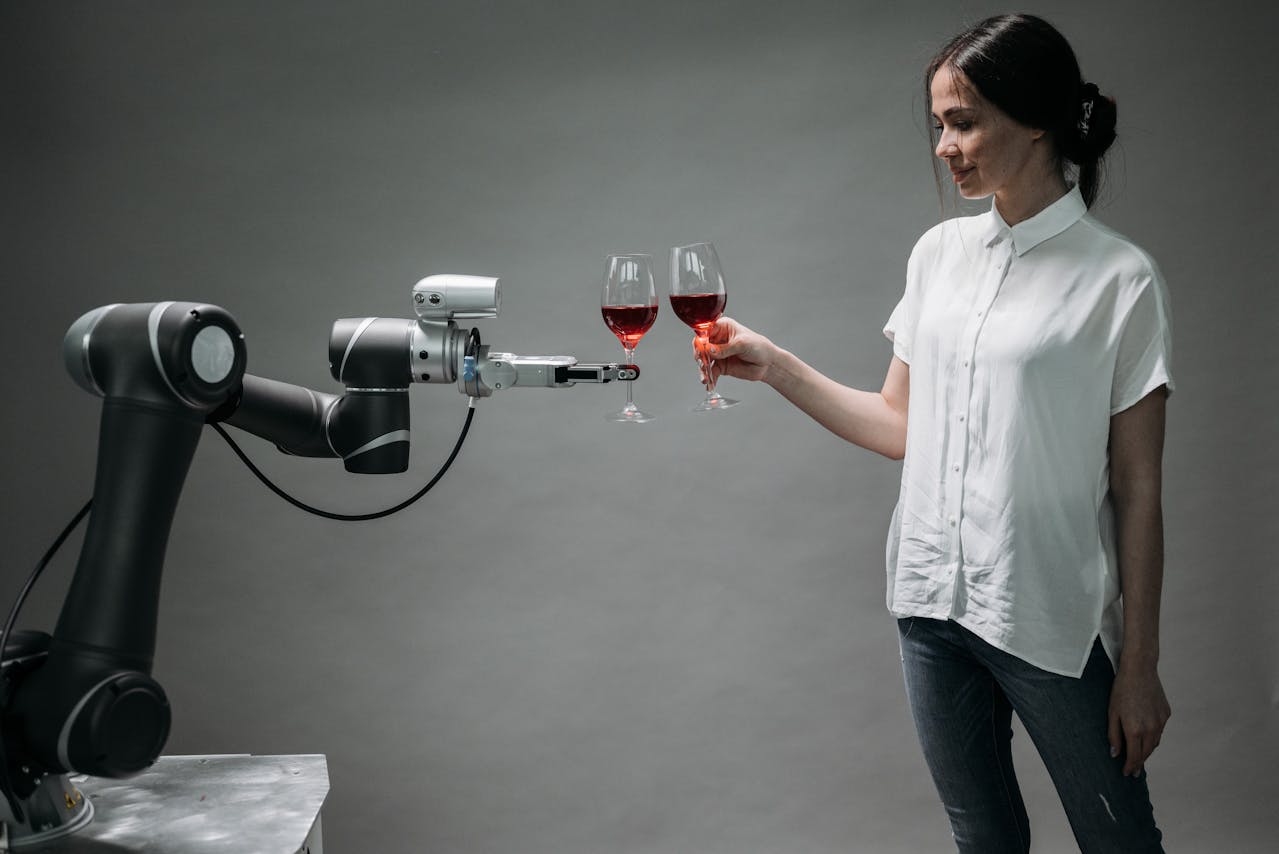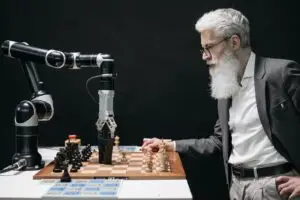As we venture further into the digital age, the collaboration between humans and artificial intelligence (AI) is becoming increasingly prevalent across industries. This partnership is reshaping the workplace, offering both exciting opportunities and significant challenges.
Let’s explore the pros and cons of AI integration and how collaboration can sustain human labor in future markets.
The Pros of Human-AI Collaboration
Enhanced Efficiency and Productivity
One of the most significant advantages of human-AI collaboration is the dramatic increase in efficiency and productivity. AI excels at processing vast amounts of data, identifying patterns, and executing repetitive tasks with precision[1]. This capability allows human workers to focus on more complex, strategic, and creative activities, leading to improved overall productivity.
Improved Decision-Making
By leveraging AI-generated insights and recommendations, humans can make more informed and data-driven decisions[1]. This synergy between human intuition and AI-powered analytics results in better outcomes across various fields, from healthcare to finance.
Innovation Acceleration
The combination of human creativity and AI’s computational power fosters a culture of innovation. AI can analyze enormous datasets and generate insights that might not be apparent to human analysts, sparking new ideas and solutions[1].
Enhanced Customer Experience
In customer service, AI chatbots can handle routine inquiries, allowing human agents to focus on more complex issues that require empathy and critical thinking[4]. This collaboration leads to faster, more efficient service while maintaining the human touch where it’s most needed.
The Cons and Challenges
Over-reliance on AI
There’s a risk of becoming too dependent on AI systems, potentially diminishing human critical thinking and independent judgment[1]. It’s crucial to maintain a balance and encourage human workers to develop and trust their own skills.
Job Displacement Concerns
While AI creates new job categories, it also automates many existing roles. This shift in the job market can lead to anxiety and uncertainty among workers[2].
Skill Gap and Adaptation
The rapid advancement of AI technology creates a need for continuous learning and adaptation. Many workers may struggle to keep up with the evolving skill requirements in an AI-integrated workplace[1].
Ethical and Privacy Concerns
The use of AI raises important questions about data privacy, security, and ethical decision-making. Ensuring that AI systems are free from bias and align with human values remains a significant challenge[1][2].
Sustaining Human Labor Through Collaboration
Despite the challenges, human-AI collaboration offers a path to sustaining and enhancing human labor in future markets:
Complementary Strengths
By focusing on the unique strengths of both humans and AI, we can create more effective and resilient workforces. Humans excel in areas like emotional intelligence, ethical decision-making, and complex problem-solving, while AI brings unparalleled data processing and pattern recognition capabilities[4].
Continuous Learning and Upskilling
To thrive in an AI-integrated workplace, organizations must invest in AI education and training programs. This approach empowers individuals to adapt to the changing job landscape and remain valuable in the workforce[1][4].
New Job Creation
As AI takes over routine tasks, new roles emerge that require human oversight, creativity, and strategic thinking. The key is to identify these opportunities and prepare workers for these evolving positions[4].
Ethical AI Development
By actively involving humans in the development and oversight of AI systems, we can ensure that these technologies align with human values and ethical standards. This collaboration is crucial for building trust and acceptance of AI in the workplace[2].
Conclusion
Human-AI collaboration is not just about improving efficiency—it’s about unlocking new possibilities and reshaping the future of work. While challenges exist, the potential benefits of this partnership are immense. By embracing the strengths of both humans and AI, continuously adapting our skills, and addressing ethical concerns, we can create a future where human labor not only survives but thrives alongside AI.
As we move forward, it’s essential to approach this collaboration with a balance of enthusiasm and responsibility. The future of work will be defined not by AI replacing humans, but by how effectively we can work together to solve complex problems and drive innovation. The key lies in harnessing the power of AI while preserving and enhancing the irreplaceable qualities that make us human.
Citations:
[1] https://marianaai.com/post/human-ai-collaboration
[2] https://smythos.com/artificial-intelligence/human-ai-collaboration/challenges-in-human-ai-collaboration/
[3] https://aisera.com/blog/human-ai-collaboration/
[4] https://sjinnovation.com/future-human-ai-collaboration-whats-next
[5] https://smythos.com/artificial-intelligence/human-ai-collaboration/
[6] https://www.linkedin.com/pulse/human-ai-collaboration-future-work-how-get-your-ready-shadowens-hk8cc
Share your thoughts and suggestions on the above article. Kindly note that all comments are moderated according to our comment policy, and your email address will NOT be published.





[…] Human-AI Collaboration: The focus is shifting towards developing AI systems that augment human capabilities rather than replace them entirely. […]